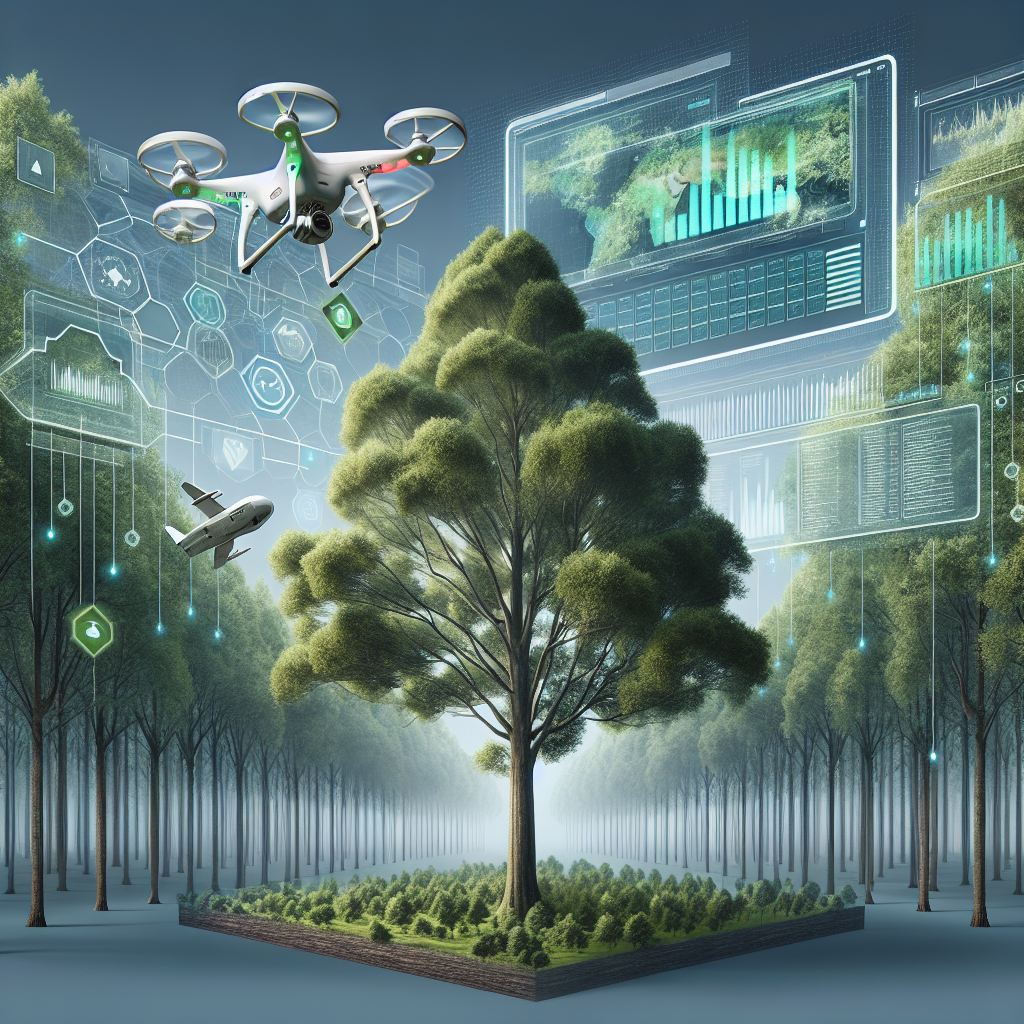AI-Powered Solutions for Sustainable Forestry Practices
Forests play a crucial role in our ecosystem by providing clean air, water, and habitat for wildlife. However, with the increasing demand for timber, paper, and other forest products, unsustainable forestry practices have led to deforestation, habitat destruction, and loss of biodiversity. To address these challenges, there is a growing need for sustainable forestry practices that ensure the long-term health and productivity of forests.
One of the key technologies that can help improve forest management and promote sustainability is artificial intelligence (AI). AI-powered solutions offer innovative ways to monitor, analyze, and manage forests more effectively, leading to better decision-making and more sustainable practices. In this article, we will explore the various AI-powered solutions that are being used in forestry practices and how they are helping to promote sustainability.
1. Remote Sensing and Monitoring
One of the most common applications of AI in forestry is remote sensing and monitoring. AI algorithms can analyze satellite imagery, LiDAR data, and other remote sensing data to monitor forest health, detect changes in land cover, and assess the impact of human activities on forests. By using AI-powered tools, forest managers can quickly identify areas of deforestation, illegal logging, and other threats to forest health, allowing them to take timely action to mitigate these risks.
For example, Global Forest Watch, a platform developed by the World Resources Institute, uses AI algorithms to analyze satellite imagery and detect deforestation in real-time. This tool allows forest managers, policymakers, and conservationists to monitor forests around the world and take action to protect them from illegal logging and other threats.
2. Predictive Analytics
Another application of AI in forestry is predictive analytics. By analyzing historical data on forest management practices, climate conditions, and other factors, AI algorithms can predict future trends in forest health and productivity. This information can help forest managers make informed decisions about when to harvest timber, plant new trees, or implement other management practices to sustainably manage the forest.
For example, SilviaTerra, a forestry technology company, uses AI algorithms to analyze satellite imagery and predict the growth potential of different tree species in a given area. By using this information, forest managers can optimize their harvesting schedules, maximize timber yields, and promote the health of the forest ecosystem.
3. Smart Harvesting and Inventory Management
AI-powered solutions can also help optimize harvesting operations and inventory management in forestry. By using sensors, drones, and other IoT devices to collect data on tree species, size, and health, AI algorithms can optimize the harvesting process to minimize waste, reduce carbon emissions, and improve overall efficiency.
For example, Komatsu Forest, a leading manufacturer of forestry equipment, has developed AI-powered harvesting machines that can automatically identify and harvest trees based on their species and size. By using these machines, forest managers can reduce the time and labor required for harvesting operations, resulting in cost savings and reduced environmental impact.
4. Forest Fire Prevention and Management
AI-powered solutions can also help prevent and manage forest fires more effectively. By analyzing weather data, satellite imagery, and other sources of information, AI algorithms can predict the risk of wildfires and alert forest managers to take preventive measures, such as controlled burns or firebreaks, to reduce the impact of fires on forests.
For example, Descartes Labs, a geospatial analytics company, has developed AI algorithms that can predict the spread of wildfires and assess the potential impact on forests. By using these tools, forest managers can plan their fire management strategies more effectively and minimize the damage caused by wildfires.
Frequently Asked Questions (FAQs)
Q: How can AI help promote sustainability in forestry practices?
A: AI-powered solutions can help improve forest monitoring, management, and decision-making, leading to more sustainable practices that protect the long-term health and productivity of forests.
Q: Are AI-powered solutions expensive to implement?
A: While AI-powered solutions may require an initial investment in technology and training, they can result in cost savings and improved efficiency in the long run. Additionally, many organizations offer AI tools and services at affordable prices to make them accessible to forest managers and conservationists.
Q: What are some of the challenges of using AI in forestry?
A: Some of the challenges of using AI in forestry include data privacy concerns, technical limitations, and the need for specialized skills and expertise to implement and maintain AI-powered solutions. However, with proper planning and support, these challenges can be overcome to harness the full potential of AI in forestry.
In conclusion, AI-powered solutions offer innovative ways to improve forest management and promote sustainability in forestry practices. By using remote sensing, predictive analytics, smart harvesting, and other AI tools, forest managers can make more informed decisions, optimize their operations, and protect forests from threats such as deforestation, wildfires, and climate change. As technology continues to evolve, AI is expected to play an increasingly important role in shaping the future of sustainable forestry practices.

